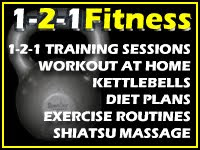
When people talk about their fitness levels, they often relate to how far they can run or how much weight they can lift, but rarely consider the other components of physical fitness.
In order to be truely 'fit' you must work on 5 components of fitness.
The components of physical fitness are:
1. Cardiorespiratory (CR) endurance - the efficiency with which the body delivers oxygen and nutrients needed for muscular activity and transports waste products from the cells.
2. Muscular strength - the greatest amount of force a muscle or muscle group can exert in a single effort.
3. Muscular endurance - the ability of a muscle or muscle group to perform repeated movements with a sub-maximal force for extended periods of times.
4. Flexibility - the ability to move the joints or any group of joints through an entire, normal range of motion.
5. Body composition - the percentage of body fat a person has in comparison to his or her total body mass.
Improving the first three components of fitness listed above will have a positive impact on body composition and will result in less fat.
Excessive body fat detracts from the other fitness components, reduces performance, detracts from appearance, and negatively affects your health.
Factors such as speed, agility, muscle power, eye-hand coordination, and eye-foot coordination are classified as components of "motor" fitness.
These factors most affect your athletic ability. Appropriate training can improve these factors within the limits of your potential.
A sensible weight loss and fitness program seeks to improve or maintain all the components of physical and motor fitness through sound, progressive, mission specific physical training.





No comments:
Post a Comment